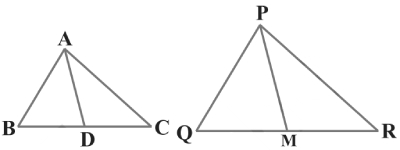Chapter -6 Triangles
Exercise 6.2
1). In Fig. 6.17, (i) and (ii), DE || BC. Find EC in (i) and AD in (ii).
(i).
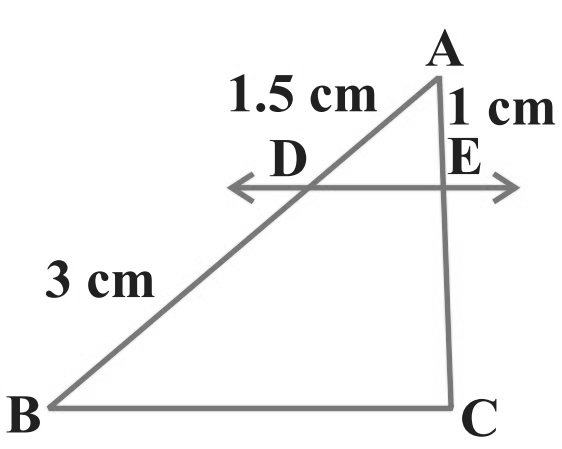
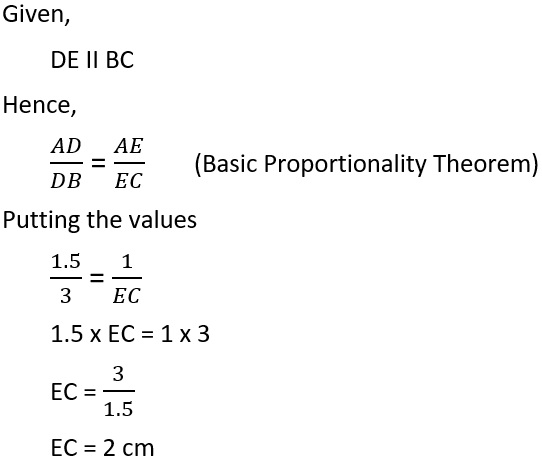
(ii).
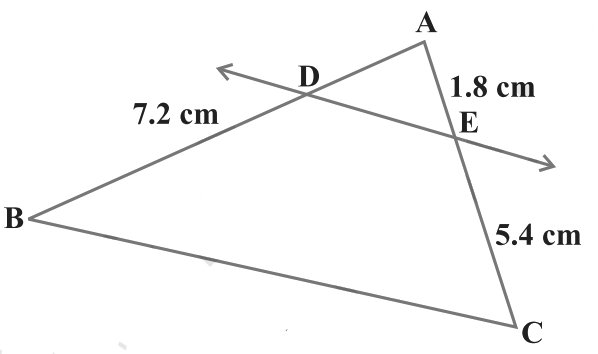
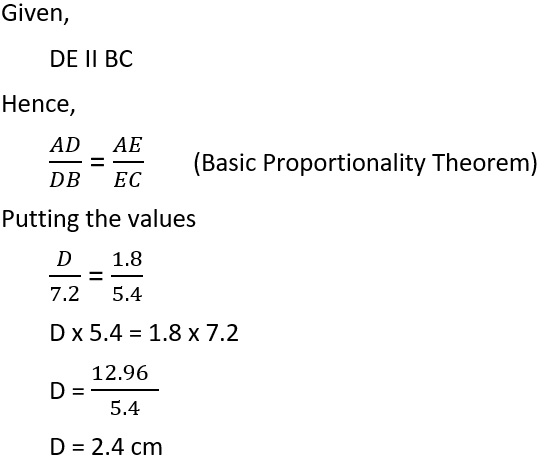
Next
2). E and F are points on the sides PQ and PR respectively of a D PQR. For each of the following cases, state whether EF || QR :
(i). PE = 3.9 cm, EQ = 3 cm, PF = 3.6 cm and FR = 2.4 cm
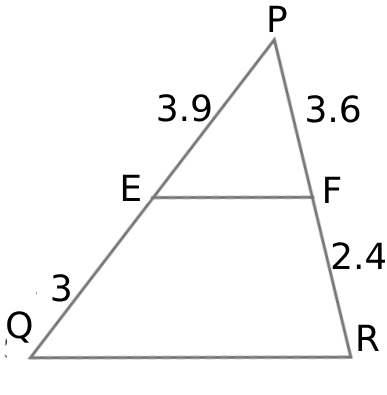
(ii). PE = 4 cm, QE = 4.5 cm, PF = 8 cm and RF = 9 cm
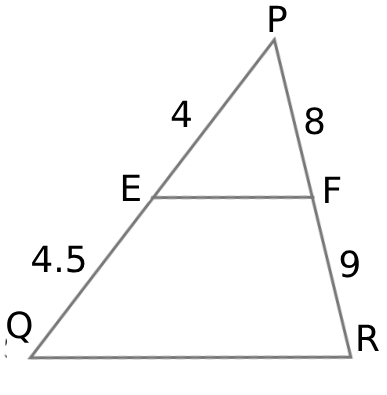
(II). PQ = 1.28 cm, PR = 2.56 cm, PE = 0.18 cm and PF = 0.36 cm
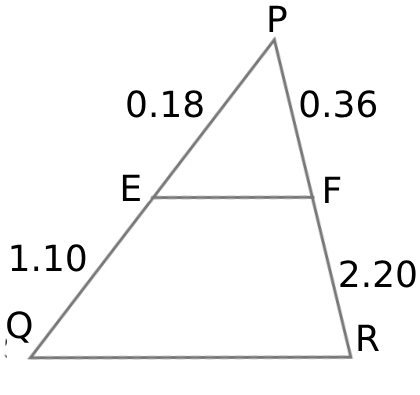
Next
3). In Fig. 6.18, if LM || CB and LN || CD, prove that
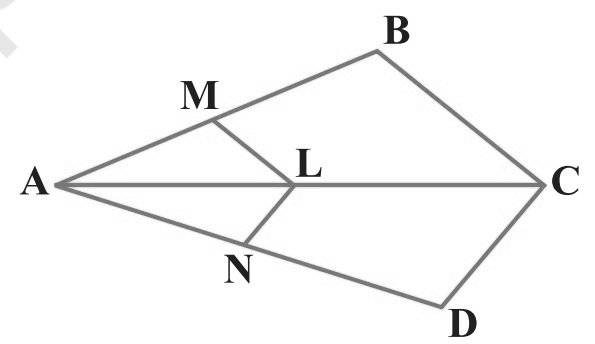
Next
4). In Fig. 6.19, DE || AC and DF || AE. Prove that
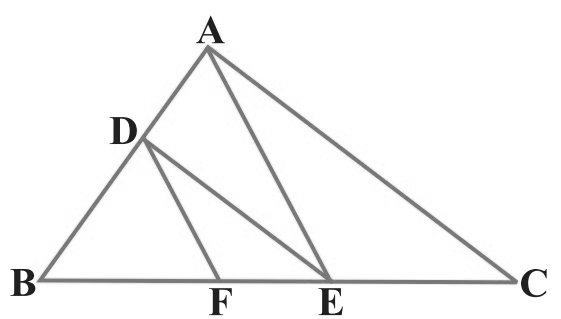
Next
5). In Fig. 6.20, DE || OQ and DF || OR. Show that EF || QR.
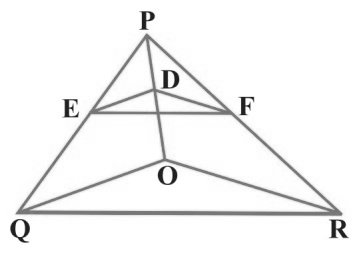
Next
6). In Fig. 6.21, A, B and C are points on OP, OQ and OR respectively such that AB || PQ and AC || PR. Show that BC || QR.
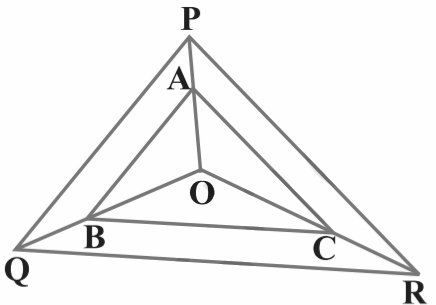
End
7). Using Theorem 6.1, prove that a line drawn through the mid-point of one side of a triangle parallel to another side bisects the third side. (Recall that you have proved it in Class IX).
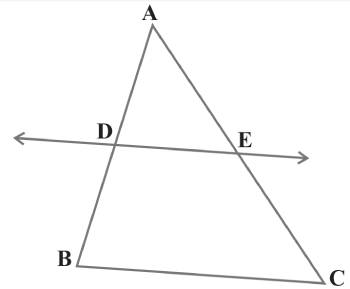
End
8). Using Theorem 6.2, prove that the line joining the mid-points of any two sides of a triangle is parallel to the third side. (Recall that you have done it in Class IX).
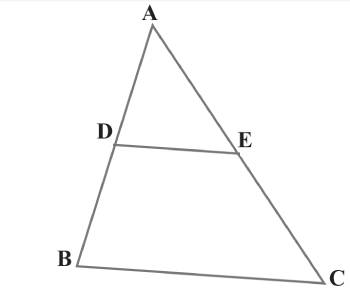
End
9). ABCD is a trapezium in which AB || DC and its diagonals intersect each other at the point O. Show that
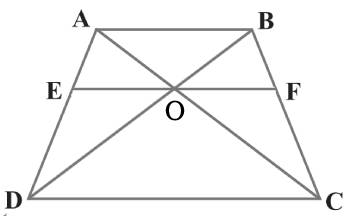
End
10). The diagonals of a quadrilateral ABCD intersect each other at the point O such that AO/BO = CO/DO. Show that ABCD is a trapezium.

End
Exercise 6.3
1). State which pairs of triangles in Fig. 6.34 are similar. Write the similarity criterion used by you for answering the question and also write the pairs of similar triangles in the symbolic form :
(i)
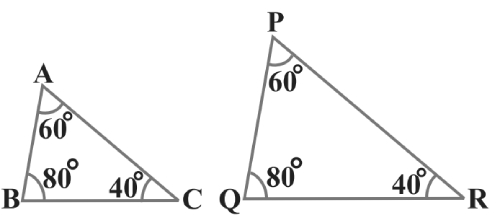
(ii)
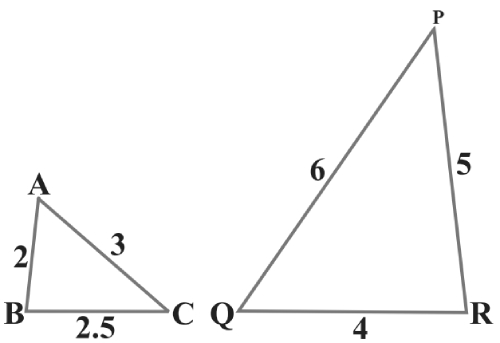
(iii)
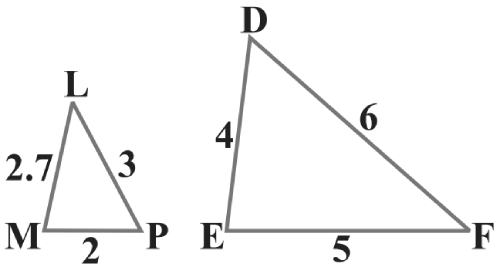
(iv)
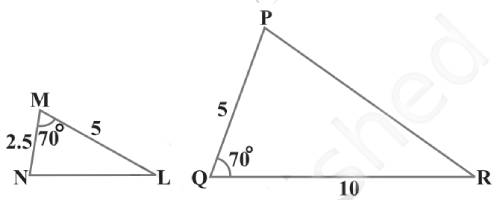
(v)
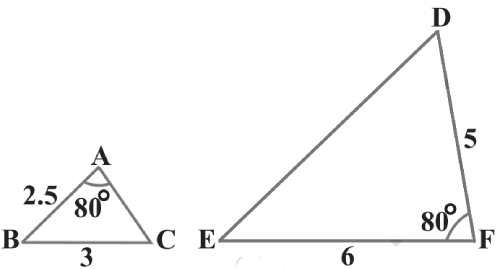
(vi)

Next
2). In Fig. 6.35, △ODC ~ △OBA, ∠BOC = 125° and ∠CDO = 70°. Find ∠DOC, ∠DCO, and ∠OAB.
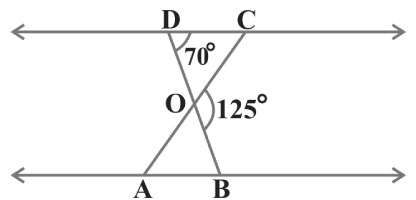
Next
3). Diagonals AC and BD of a trapezium ABCD with AB || DC intersect each other at point O. Using a similarity criterion for two triangles, show that OA/OC = OB/OD.
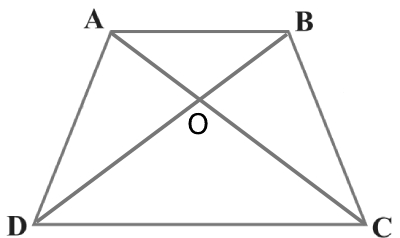
Next
4). In Fig. 6.36, QR/ QS = QT/ PR = and ∠1 = ∠2. Show that △PQS ~ △TQR.
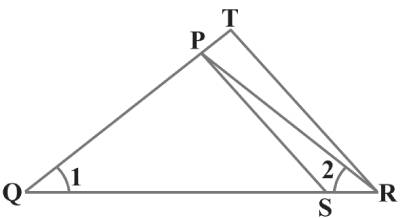
Next
5). S and T are points on the PR and QR sides of the △PQR, such that ∠P = ∠RTS. Show that △RPQ ~ △RTS.
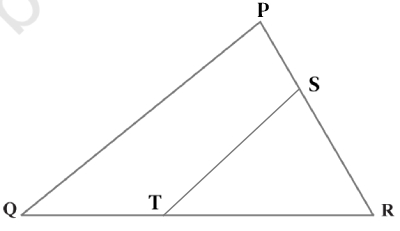
Next
6). In Fig. 6.37, if △ABE ≅ △ACD, show that △ADE ~ △ABC.
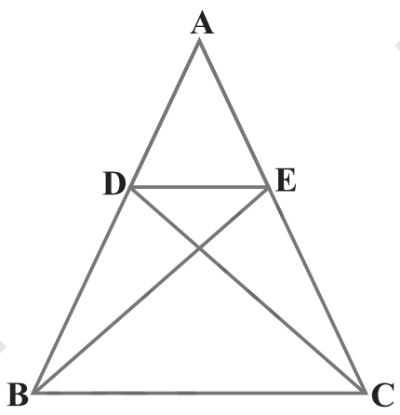
Next
7). In Fig. 6.38, altitudes AD and CE of D ABC intersect each other at the point P. Show that:
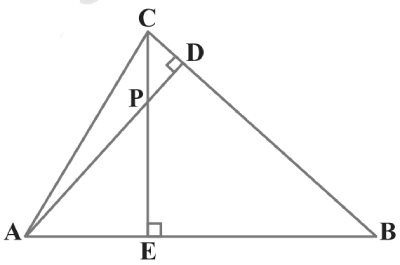
(i) △AEP ~ △CDP
(ii) △ABD ~ △CBE
(iii) △AEP ~ △ADB
(iv) △PDC ~ △BEC
Next
8). E is a point on the side AD produced of a parallelogram ABCD and BE intersects CD at F. Show that △ABE ~ △CFB.
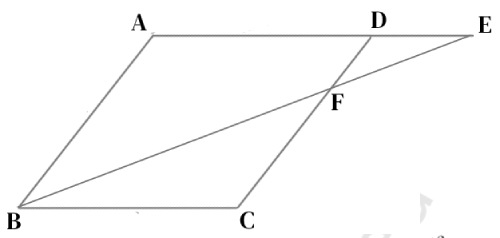
Next
9). In Fig. 6.39, ABC and AMP are two right triangles, right angled at B and M respectively. Prove that:
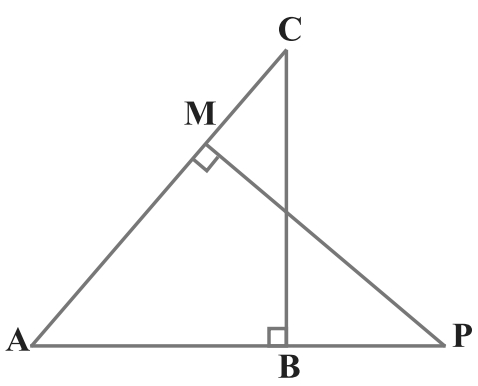
(i) △ABC ~ △AMP
(ii) CA/PA = BC/MP
Next
10). CD and GH are respectively the bisectors of ∠ACB and ∠EGF such that D and H lie on sides AB and FE of △ABC and △EFG respectively. If △ABC ~ △FEG, show that:
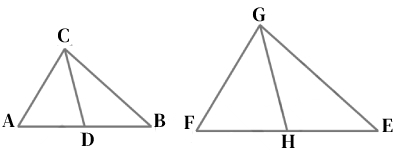
(i) CD/GH = AC/FG
(ii) △DCB ~ △HGE
(iii) △DCA ~ △HGF
Next
11). In Fig. 6.40, E is a point on side CB produced of an isosceles triangle ABC with AB = AC. If AD ⊥ BC and EF ⊥ AC, prove that △ABD ~ △ECF
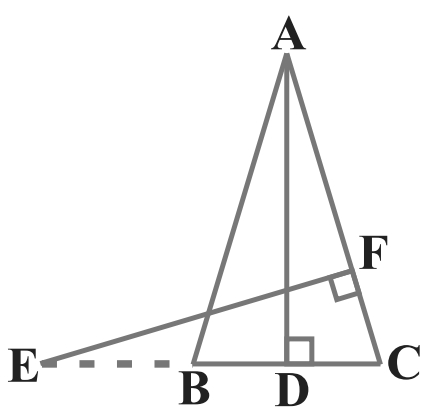
Next
12). Sides AB and BC and median AD of a triangle ABC are respectively proportional to sides PQ and QR and median PM of △PQR (see Fig. 6.41). Show that △ABC ~ △PQR.
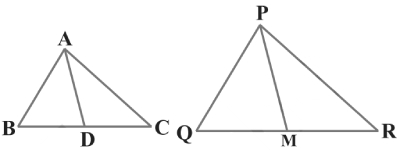
Next
13). D is a point on the side BC of a triangle ABC such that ∠ADC = ∠BAC. Show that CA2 = CB.CD
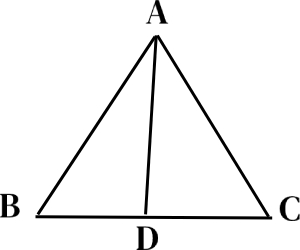
Next
14). Sides AB and AC and median AD of a triangle ABC are respectively proportional to sides PQ and PR and median PM of another triangle PQR. Show that △ABC ~ △PQR.

Next
15). A vertical pole of length 6 m casts a shadow 4 m long on the ground and at the same time a tower casts a shadow 28 m long. Find the height of the tower.
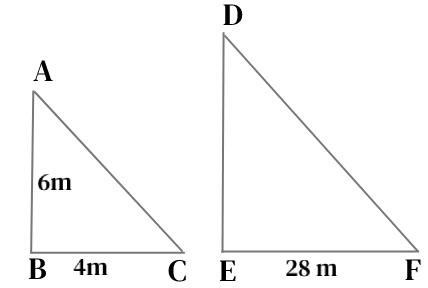
Next
16). If AD and PM are medians of triangles ABC and PQR, respectively where △ABC ~ △PQR, prove that
